Sciencing the Enneagram's Lines
A case study of subjective science.
This is part 4 of a series on the Enneagram. You’ll probably want to read the earlier three posts first:
Personality Machines, which is my Enneagram intro. I think it’s worth reading even if you’re already familiar with the Enneagram: I derive the types from the Centers in a way I don’t recall seeing elsewhere, and I’ll be relying on that derivation today.
Ego Spirals, which is about how to use the Enneagram for personal growth. This is the whole point of the system in my opinion.
Putting People in Boxes, which is about the challenges involved in typing ourselves and others. It’s also secretly about navigating a paradox that shows up in today’s topic too.
Today I want to focus on investigating a likely flaw in the Enneagram, and how you can personally do some science to investigate and possibly fix it for yourself if you’re so inclined.
The issue centers around the diagram’s inner lines. Up until this point, nothing I’ve said requires anything other than having nine types drawn on a circle. But that’s really not the most visually striking part of the Enneagram symbol. For whatever reason, it has an inner triangle and an unusual six-sided star pattern connecting non-adjacent points together.
The diagram is central enough that the whole system is literally named after it. It’s called “the Enneagram”, not “the three Centers theory”.
So what do the lines mean?
It turns out that the standard answer introduces a problem:
There’s a way to view the usual interpretation of the lines very pragmatically. You can test them out for yourself to see if they work for you. And at least sometimes they work very well!
But the lines’ historical origin is very suspicious, and their underlying theory is fragmented. There’s good reason to expect them not to work as described.
This problem type shows up from time to time in the history of science. In the 1800s a physician, Ignaz Semmelweis, came up with a stunningly successful method of preventing “childbed fever”: doctors should wash their hands between conducting autopsies and assisting with childbirth. It sounds obvious today. But the problem was that the germ theory of disease had not yet been invented, and Semmelweis’s theory was incompatible with the dominant model of medicine at the time. The result was that Semmelweis had his career ruined and was driven into an insane asylum. It wasn’t until well after his death, after germ theory had been discovered, that physicians were willing to use Semmelweis’s methods despite the fact that he had objectively demonstrated that they worked.
When faced with a ridiculous tool that works, one challenge in science is to neither (a) dismiss the tool for its ridiculousness nor (b) believe its nonsense simply because it works. It turns out that Semmelweis’s theory was wrong and resulted in something effective for almost coincidental reasons. When the error was corrected, his methods were improved upon. What would have let medicine benefit from his solution to “childbed fever” without getting locked into a wrong view about what caused it?
I want to use the Enneagram’s lines as a case study of walking science’s middle path here. We can see how to use the lines, see their theoretical absurdity, and then while holding both views ask: “What’s really going on here?”
So that’s what I’m going to spell out today. I’m going to lay out the standard description of the Enneagram’s lines with an eye toward using them pragmatically. Then I’ll explain the lines’ background theory. I’ll share a bit about my own experience with the lines as a case study of how they really can be surprisingly effective. And then I’ll suggest an experiment you can do to maybe get insight into what’s really going on.
Two guidelines for this post:
If your only interest is in my take on how to use the Enneagram’s standard theory of its lines, you can get that from just the first section below.
If you care only about the experiment and not about the background, you can jump to “The experiment” near the end. I think you can engage in it without knowing the background theory first if you want to.
So with that, let’s get to it!
Using the lines’ standard theory
The standard use of the lines is to track how types can suddenly switch around under stress.
The personality machine doesn’t really want to enact a downward spiral. It’s just an enthusiastic computer program. It’s trying to achieve the goal that Essence set for it. The downward spiral arises from the fact that the personality’s strategies are inadequate to handle all of life. That creates problems due to the “one trick pony” nature of the robotic personality. And it then tries to solve those problems using the same strategies that created them, because it kind of has just one button it can mash.
Sometimes, though, the personality will try switching strategies before doubling down on the original one. And that strategy switch can kind of work! It’s a bit like trying to release some steam instead of adding pressure to keep the container from exploding.
But the personality is still mechanical. Which alternative strategy it tries is very predictable. It supposedly goes in what’s called “the Direction of Disintegration”:
There are two cyclic patterns here, one for the primary types and another for the secondary types:
Primary: 9 → 6 → 3 → 9
Secondary: 1 → 4 → 2 → 8 → 5 → 7 → 1
So for instance, an Eight who’s under a lot of stress might suddenly start acting like a Five. They might take a step back and self-isolate to strategize and gather their resources. An Eight personality will sometimes try a move like this before doubling down on forceful and punishing action.
The thing is, such a person is still an Eight. They don’t become a Five; they just start operating as one for a while. The core issue is still that their personality’s Eight design is overwhelmed. It won’t work for them to treat themselves as a Five to ease their situation:
Fives need Essence to shine through their Gut Center and then use that bodily grounding and activity to open their Hearts.
But the type Eight personality design starts with Gut Center distortion. Trying to push themselves into effective action exactly plays into the machine’s basic strategy. It’s not a pathway for Essence to come through.
So an Eight who recognizes their movement to Five and then tries to apply type Five de-spiraling strategies will tend to tighten their type Eight knot.
A more helpful approach (in theory) is for the Eight to use the movement to Five as a signal. It indicates that the personality is at risk of tightening up. Even though stilling the mind isn’t something Average Fives can do, it’s often exactly the right move for Eights who are Disintegrating to Five.
And they can check if it’s working: the impulse to operate like a Five should evaporate if the Eight unwinds their core ego spiral a little. If it doesn’t, then that’s a sign they’re not an Eight!
So in practice, once you know your type, the lines can give you more detail about what choice points to look for in yourself. If you’re a Seven and you start getting serious and focused and kind of tense, that might be a Disintegration to One, which would make it a signal to notice the urge (from the Gut) to do something in response to a feeling of dissatisfaction (i.e. a neglected Heart). It’s a sign that the core type is stressed. The problem is actually addressed by unwinding the Seven spiral, not by putting more energy into the Disintegrated strategy of forced discipline (despite that move seeming very sensible on the inside!).
It’s also a warning when it comes to determining type. Someone can very, very clearly show up as an Eight but turn out to be a Disintegrating Two, for instance.
This is yet another illustration of why it’s important to determine type based on which lens actually works to make life better in contact with them. As opposed to focusing on traits or behavior, or on what explanation feels compelling to you or to them.
The explanation is lacking
The above description is very pragmatic. Given the diagram, here’s how you read the lines to notice more choice points for unwinding your type’s downward spiral.
But it doesn’t give any structural reason for the lines to be this way. Why do they have to be about reactions to stress? Why will a type switch to just one other type under stress? And why should this specific pattern depicted by the lines be how the types are interconnected?
I have some bad news:
No one knows.

The diagram itself came from GI Gurdjieff. He said he’d learned it from some spiritual teachers. And maybe he did! But it seems worth noting that there’s no clear sign of the Enneagram’s diagram prior to him.
He didn’t talk about personality types. He did talk about the personality mechanically trapping the soul, and he used enneagrams to relay some of his ideas about how to free the soul. But it was other people (most notably Claudio Naranjo) who developed the enneagrams into a personality typing system.
Gurdjieff’s explanation for the diagram amounted to sacred geometry based on numerology. The main key observation is:
Which is to say, the decimal expansion of 1/7 follows what we now read as the Directions of Disintegration for the secondary types.
Two of the principles Gurdjieff taught were “the Law of Three” (represented by the Enneagram’s inner triangle) and “the Law of Seven” (represented by the six-pointed figure following the 1/7 decimal pattern). It’s possible that the diagram basically started out as a way to put these two principles together visually.
It looks like Naranjo started with Gurdjieff’s diagram, noticed that the way Gurdjieff and others described the nine corners could be fleshed out into personality patterns, and then tried to find a way to make Gurdjieff’s lines relate to the personality types.
As to why the lines are specifically about stress, that idea apparently came about due to a misinterpretation. Naranjo originally suggested that types might move along both lines (and to both wings), both under stress and also while integrating (i.e. becoming Healthy). A Jesuit priest, Robert Ochs, misheard or misremembered what Naranjo said about the lines at a seminar in the 1970s. Ochs then went on to teach about Disintegration (and Integration, which is movement along the opposite direction when Healthy). It just turns out that the priest’s accidental idea was very sticky and eventually became endemic.
It’s possible that Ochs stumbled onto a true idea. Maybe it spread because it spoke to something in people. But even if so, we still have some pretty critical unanswered questions:
Why would Gurdjieff’s diagram relate to the personality types? What’s the structural relationship? What does the decimal expansion of 1/7 have to do with the dynamics of the Centers, for instance?
Why number the types the way we do? The labels were totally arbitrary up until this point. But now the fact that One Disintegrates to Four supposedly arises from the fact that “14” appears in the decimal expansion of 1/7. So all of a sudden it matters a lot how we’re numbering the types!
What structurally determines the Directions of Disintegration for the primary types? Why does Six Disintegrate to Three instead of to Nine for instance?
Sadly, these just aren’t questions I’ve heard asked in the Enneagram world, let alone answered.1 Meaning there’s no coherent underlying theory for the lines as far as I know.
But the lines still work sometimes
And yet, attending to the lines suddenly started really working for me when I figured out my type.
I gave up on the lines many years ago. Their background seemed like nonsense. People argue over how to read them in ways that remind me of astrologers fighting about how to interpret Pluto now that it’s “not a planet”.
And I couldn’t see how to use the Directions! When I thought I was a Five, I didn’t know what to do with observations of what I saw as my Seven-like behaviors. And when I thought I was a Six, I flat out didn’t relate to most descriptions of “Disintegration to Three”.
But I sometimes do display some Four traits. I started out thinking I’m a Five with a Four wing. And when I reinterpreted myself as a Six, I guessed that the Four-like stuff was “type Six moodiness and self-doubt”. I even seriously wondered for a little while last year if I just am a Four — with a sentiment like “Okay, if I can be a Four instead, then I don’t think the Enneagram is useful.”
When the stuff about being a One clicked, and the type One map of the downward spiral started working for me, a thought arose:
“Oh no. Oh no. Is that Four-like stuff… Disintegration? Are those stupid lines actually right?”2
So I tested it out. Normally in Four mode I’m tempted to “process” my feelings. A Four would need to address that temptation by dropping the heartbreaking stories and focusing on grounded activity. But a One Disintegrating to Four needs to find the (possibly hidden) urge to condemn something, and then relax that harsh grip on the Heart. Basically ignoring the melancholy and feelings of worthlessness: they’re distractions from the core stress of trying to fix the imperfections of the world.
And when I tried it, it worked. The dark mood would abruptly lift.
I want to emphasize that the effect really isn’t subtle for me. It’s quite powerful. I used to wallow in a sense of my life going nowhere, that what I do doesn’t matter, that I’ve been so terribly hurt by my past that maybe I’m just permanently broken, etc. Even though I knew these thoughts probably didn’t make sense, I still couldn’t stop them from arising and shifting my state, almost like an emotional fog would roll in and occlude my inner experience.
But once I got a handle on how to catch the Wake-Up Call for Ones, I could just look for the hidden cramp in the Heart, release that… and POOF. Fog cleared. In seconds.
So whatever the reason, tracking my Direction of Disintegration as such in fact works for me.
Some pragmatics
So, in the midst of this mess… what are we to make of the lines?
Fortunately, from a practical standpoint the situation is pretty easy. Here are two options:
You can totally ignore the lines if you want to. Dismiss them as a quirk of history if you like. Maybe there’s some way to explain how I benefitted from considering them, but you don’t have to figure it out. You can use the rest of the Enneagram just fine without giving them any attention.
You can test whether your Direction of Disintegration is useful to you. If you’re pretty sure you’ve figured out your type, try looking for how your Direction shows up in your life, and test what happens when you treat its appearances as choice points. If that view works to dissolve stress reactions, great! If nothing notable happens, then you can go back to option 1.
Technically that second option is a little messy. If you don’t get good results, maybe you’ve just mistyped yourself, or maybe you’ve misidentified how your Disintegration shows up, or maybe you’re still developing skill with responding to your core type’s Wake-Up Call.
But you don’t have to worry about all that. If the tool is useful, it shouldn’t be arbitrarily subtly useful. There isn’t much point in throwing hours of study into a system that maybe kind of helps a little if you look carefully enough, or promises to work “someday”. If it’s useful, it should demonstrate itself as such quickly and clearly once you’ve worked out your type. Even if the road to changing your habits is slow, it should be clear you’re on the right path.
As always, the measure to focus on is whether life is becoming more wholesome for you.
Some science
With all that said, there’s a way you can test what’s really going on with these lines. I’d like to explain how.

In part 1 of this series, I noted how the primary types have two modes when they’re in Average functioning. How Heart types (3) have a Head/Gut mode, Head types (6) have a Heart/Gut mode, and Gut types (9) have a Head/Heart mode.
This is an unexplained detail. Why should the primary types have two modes? Why don’t the secondary types have two modes too?
Well, something interesting happens if we suggest that they do.
The Center-based mechanism for Average Nines’ Head/Heart mode, for instance, is that the personality drops the primary Center (the Gut) and focuses on a fusion of the other two.
What would it look like for Ones to do the same? Well, they’d drop the Gut and bundle the Head and Heart, just like Nines do. But Ones already mechanize the Heart more than the Head. So what if Ones’ “other mode” emphasizes the Heart a bit extra? Meaning it’s a kind of temporary “Heart with some Head” state?
Well, that would be Four. That’s precisely what defines Four.
Which just so happens to be One’s Direction of Disintegration.
It turns out that this proposed mechanism almost but not quite overlaps with the standard lines. I’ll bold the exceptions:
Head/Gut (7) → Gut/Heart (1)
Gut/Heart (1) → Heart/Head (4)
Heart/Head (4) → Head/Gut (7)
Heart/Gut (2) → Gut/Head (8)
Gut/Head (8) → Head/Heart (5)
Head/Heart (5) → Heart/Gut (2)
Which is to say, under this theory Fours and Fives would swap their Directions of Disintegration.
It also implies that the primary types don’t “Disintegrate” to another type, and certainly not to each other. The thing we’re calling “Disintegration” for the secondary types shows up as mode-switching in the primary ones. If we really want to depict that pattern visually, we’d project the primary types directly across the circle, representing that they sometimes “Disintegrate” into an even mix of the opposite two Centers in the Average range.
If this theory is roughly right, then the reason the Directions of Disintegration seem to work sometimes is because Gurdjieff’s lines happen to overlap with the mode-switching patterns for 1, 2, 7, and 8. Meaning that some people will accidentally get excellent results from using the lines, while most others won’t be able to get them to work at all.
I want to emphasize that this theory makes empirical predictions. It should be possible to distinguish between this mode-switching idea and the Disintegration claim that relies on Gurdjieff’s lines. It suggests, for instance, that Fours will get better results from observing and dissolving Seven-like behavior than from targeting Two-like behavior.
It also implies that the Centers-based advice for the primary types might be wrong. Eights and Ones, for instance, need to dissolve their “Disintegrated” modes by having Essence come through the Head and Heart in some order (Head first for Ones, Heart first for Eights). If the checked-out fantasy mode of Nines really is an even balance of these two “Disintegration” patterns, then Nines should do better to clear out the Head and Heart simultaneously, and then use that resource to sort out their Gut distortion. Heeding the Nine’s Wake-Up Call should be practically made of dropping the dual-Centers fantasy mode directly.
The experiment
So here’s how you might be able to do an empirical test of what’s going on with the lines:
If you determine you’re a Four or a Five, you can try treating both Seven and Two as possible “Directions of Disintegration”. You learn something in every case:
If your classical Direction works much better, then that invalidates the mode-switching theory, which (a) makes it more likely that Gurdjieff was on to something with his 1/7 pattern and (b) raises the question of what’s up with the mode-switching for the primary types.
If the mode-switching theory works better, then it’s more likely that personality has a consistent meta-structure independent of type. It raises another question for future exploration: why does personality mode-switch while still preferring a type? What mechanically prevents it from fluidly moving between all the types if it’s able and inclined to switch which Centers it’s using like this?
If neither Direction works in any interesting way, then there’s probably nothing to the lines at all, at least for you. My own experience remains unexplained but is less compelling as evidence for the lines.
If both work well, then that suggests that a lot of the Enneagram works via self-fulfilling prophecies. Which is amazing! It suggests that maybe we can somehow “predict” ourselves into much more wholesome ways of being directly. Suddenly there’s more to explore!
If you determine you’re a primary type (Three, Six, or Nine), you can experiment with directly clearing your dual-Centers mode. Under the mode-switching theory, this approach should work significantly better than focusing on the primary Center does. I’m not totally sure what this approach looks like, which means this branch of the experiment is less conclusive than the one for Fours & Fives. But here’s a possible sketch:
Threes would focus on physically relaxing and coming into stillness and clarity. Things like yoga nidra might work extremely well for them (especially if they can drop into living relaxation instead of going mentally limp). The aim being to directly dissolve their efficiency/performance mode when it arises.
Sixes would attend to savoring the present moment, relaxing into the delight of connecting with whoever or whatever is with them. Stuff like Authentic Relating might be a blessing here. Again, aiming to let go of their devotion mode when it activates.
Nines would focus on clearly seeing and being touched by the precise beauty and preciousness physically around them. I’m personally not aware of a single practice that does both Head and Heart stuff like this; I think it’d be concentration meditation but with heart, or loving-kindness meditation but with sharp clear focus on what’s right here right now. The point being to come out of fantasy and reminiscing. (This also suggests the Nine’s Wake-Up Call might be misnamed: it’d be about spacing out, which can result in overriding “no”s and going along with others.)
If you determine you’re a One, Two, Seven, or Eight… then there’s much less you can do here. You just don’t have an internal way of distinguishing the two theories. But you can still check whether accounting for your Direction of Disintegration helps you. If it doesn’t, that invalidates both theories. If it does, you can’t conclude very much… but at least you have a tool that works for you!
There’s a fascinating quirk to this exploration: it’s possible for you to run the experiment and come to a clear conclusion, but not be able to show me the results as clearly as you know them. I probably can’t replicate your experiment since my type is probably different from yours. I also can’t directly see whether & how your subjective experience improves. I can hear your claims, and those matter, but I also know that people can fool themselves. You might be able to tell you’re not fooling yourself, and yet not be able to show me how you know in a way I can trust as deeply as you do.
(That said, if you do run the above experiment, I’d love to hear how it goes! Your claim is still highly relevant evidence I’m happy to learn about.)
This challenge is intrinsic to doing science when some of the measures are subjective (e.g. how good life feels to you). We usually solve this problem in science by finding objective measurements that we hope are good proxies. And I think that effort is worthwhile. It’s part of how we bridge communication inter-subjectively.
But in this case it wouldn’t help you to start with objective measures. Some of the stuff you care about is subjective. If your focus is on benefitting from the Enneagram (as opposed to convincing others that the Enneagram is useful), then you really want to directly track the subjective stuff that really matters to you.
So it’s not key that you make what you’re doing objective.
It’s that you can tell for yourself what works for you.
This was a case study
I’m using the Enneagram as a case study. I’m giving an example of a very particular kind of analysis. While I suspect and hope that the Enneagram really is helpful to a lot of people, I actually care a lot more about the method of analysis.
It’s very closely related to what kicked off the scientific revolution. There was a key insight that let us invent steam engines, and harness electrical power, and obliterate an ancient monster, and enact countless other miracles our medieval ancestors would find stunning.
I think that insight was applied too narrowly. We mistakenly thought the insight was about objectivity. That resulted in enormous command over objects. But we don’t seem have a corresponding growth in wisdom or compassion. We struggle to work out how to make marriages healthy, or what makes communities thriving and wholesome, or what to do in the face of depression and despair.
And I don’t think we can fill that gap with even more objective rigor. I think something else is needed.
I have a solid guess about that “something else”. It’s what I’ve been using to reorganize the Enneagram into what I hope can be a powerful psychotechnology. Not just something that’s psychoactive (e.g. creates feelings of insight), but something that does real work. With an eye toward building an “engine” that creates wholesomeness and wisdom with roughly the same kind of reliability that a motor creates movement.
So with the Enneagram in hand as an example, I’m hoping to explain the general theory next time. I want to spell out what I mean by “subjective science”.
…with some minor exceptions. People will sometimes give some plausibility story for why (say) Sixes should become workaholics instead of numbing out in response to stress. But the process of generating stories like that wouldn’t have let someone rederive the Directions of Disintegration without knowing them ahead of time. If it were more popular to claim that the Disintegration pattern is 3 → 6 → 9 → 3, and some narrative justification were given, do you think people would notice the error and insist on switching the arrows around?
As an aside: I really did think this way at the time. Notice the Heart contraction involved in calling the lines “stupid”! That’s a micro example of the Wake-Up Call for Ones as it appears for me. It’s not about the word per se; it’s in the urge to condemn this way in this context. I think I’ve made enough progress that I think I’d react differently now. I might just laugh!

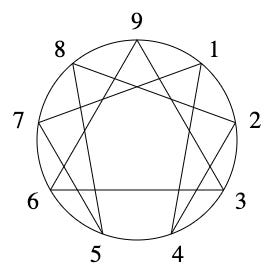
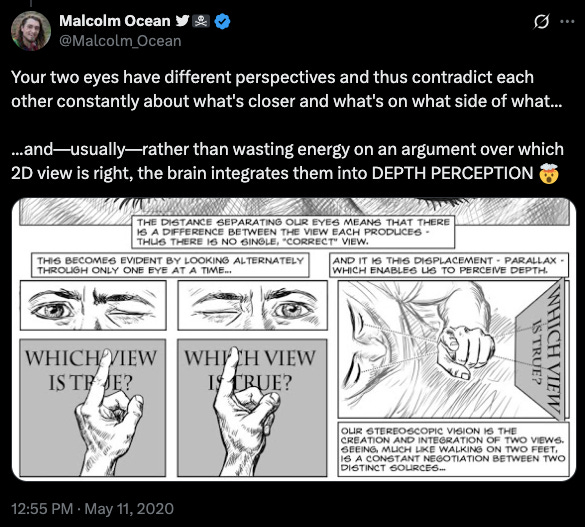
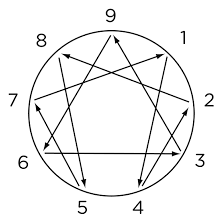
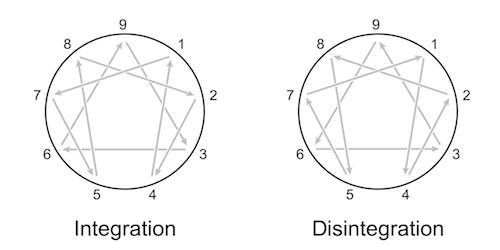
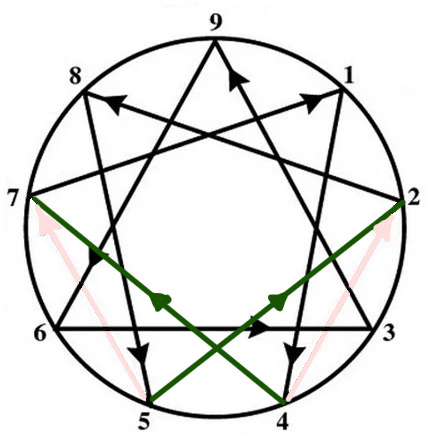
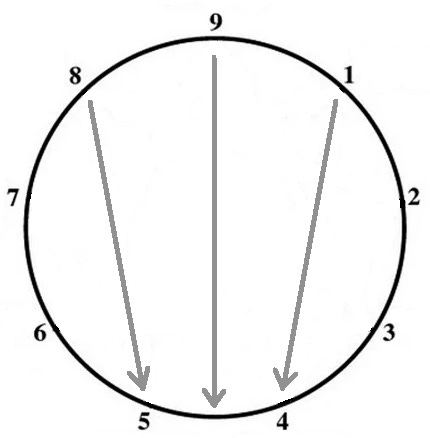
Hmm, thinking about myself, on the theory that I'm a 4, it makes sense both that I disintegrate to 2 and 7. Under stress I've been known both to engage in people pleasing and excessive self reliance behavior, and walking myself back from that has been necessary. But if I'm honest I've probably done more people pleasing.
But I don't know, I kind of feel like there's a bit of all the types in me at times and sometimes I may be engaged in behavior that classically belongs to a type and then looking at how those types unwind things may be useful.
I know your theory here tries to stick to what helps a person get out of the spiral and that makes sense, but I can't help but wonder if it's instead all connected and depending on the situation someone will move to a different type expression, but some of those moves are more likely than others depending on type, so it starts to look like these lines exist when they are actually more like statistical patterns.
A great essay that I’ve been reflecting on. The crux of it seems to be: “it’s possible for you to run the experiment and come to a clear conclusion, but not be able to show me the results as clearly as you know them. I probably can’t replicate your experiment since my type is probably different from yours. I also can’t directly see whether & how your subjective experience improves. I can hear your claims, and those matter, but I also know that people can fool themselves. You might be able to tell you’re not fooling yourself, and yet not be able to show me how you know in a way I can trust as deeply as you do.”
This is a problem common to all subjective science. With objective science, the method of double-blind peer reviewed studies has been adopted as a means of solving the analogous problem in that field. What’s the best solution here?